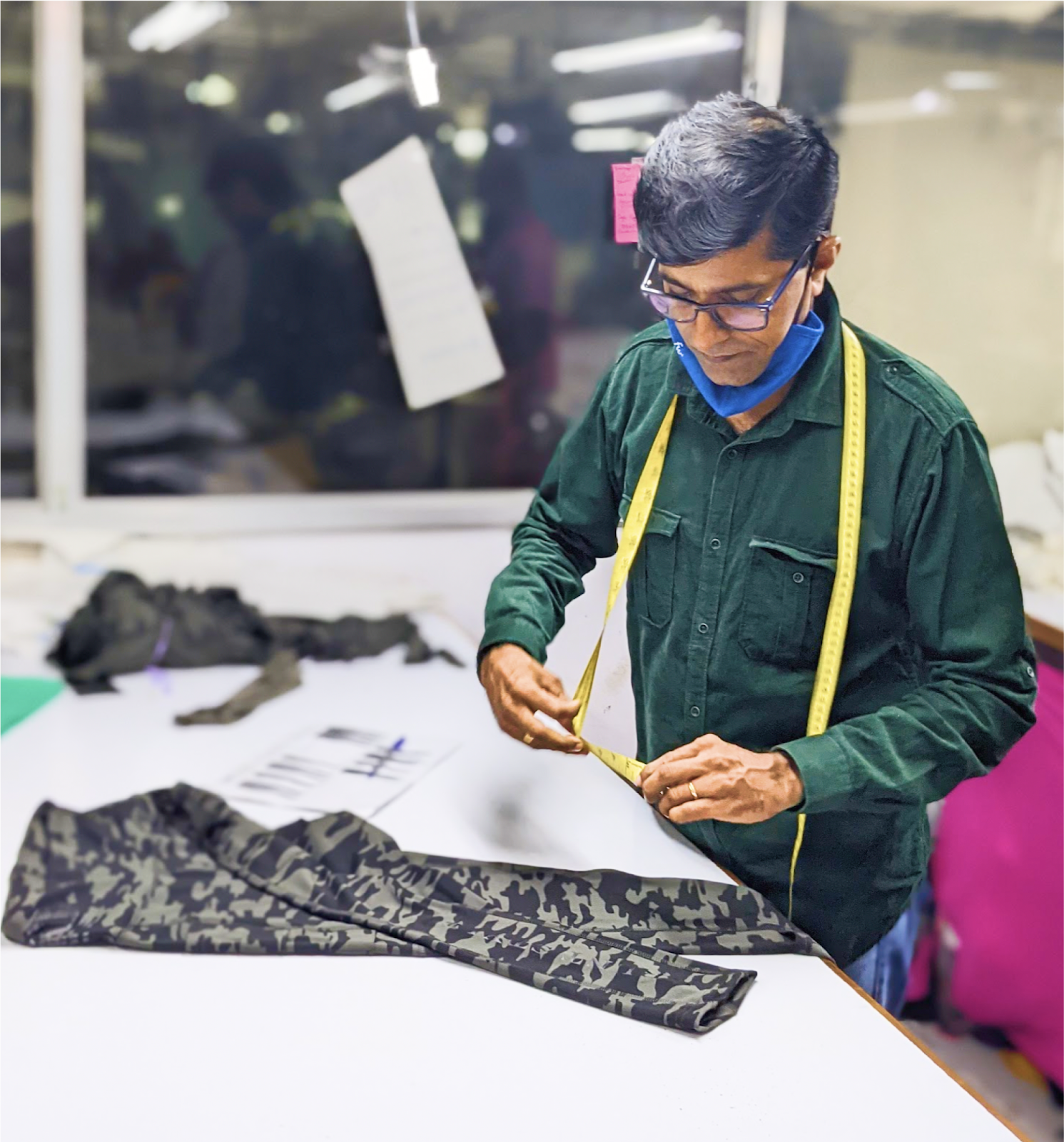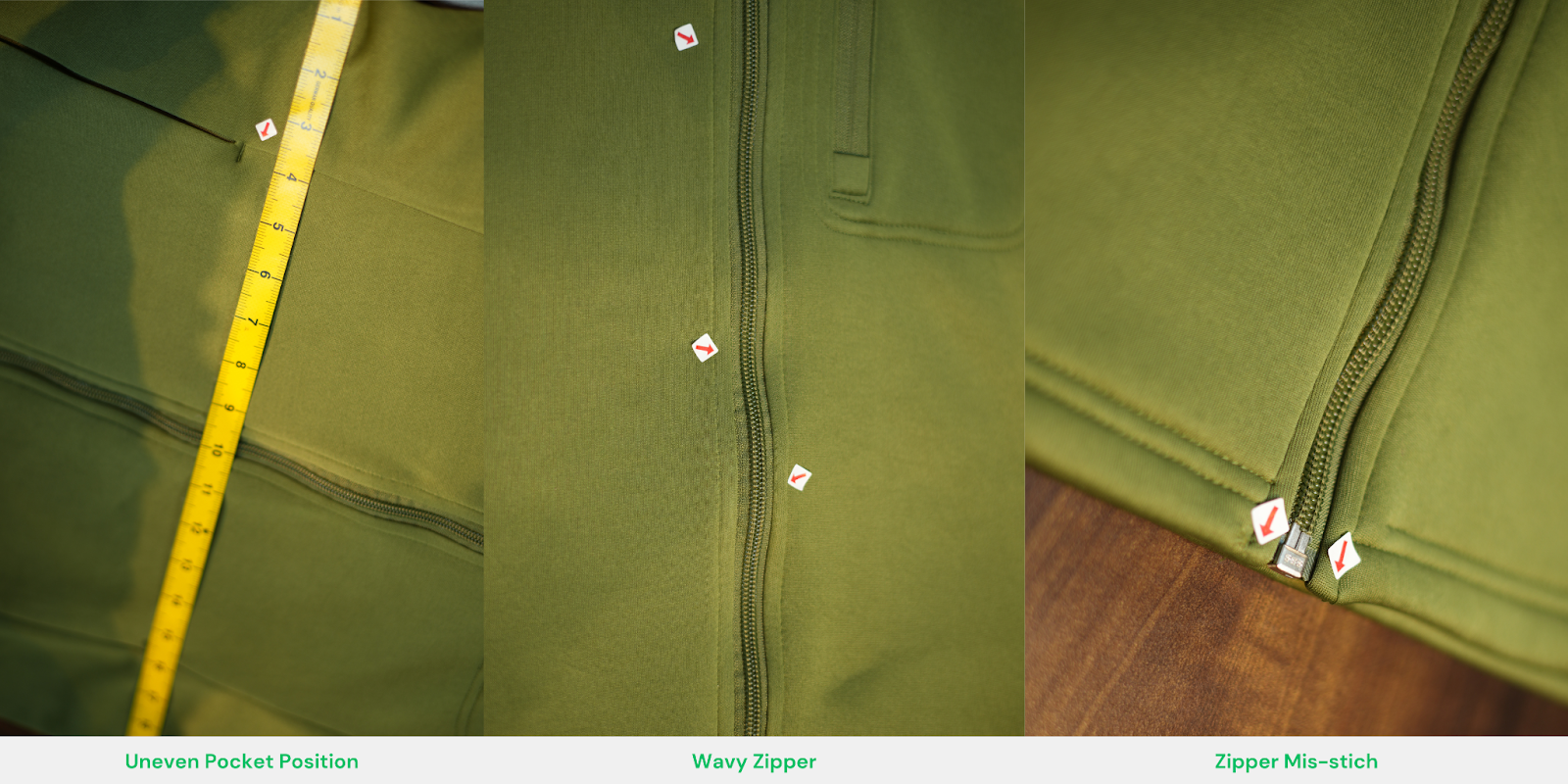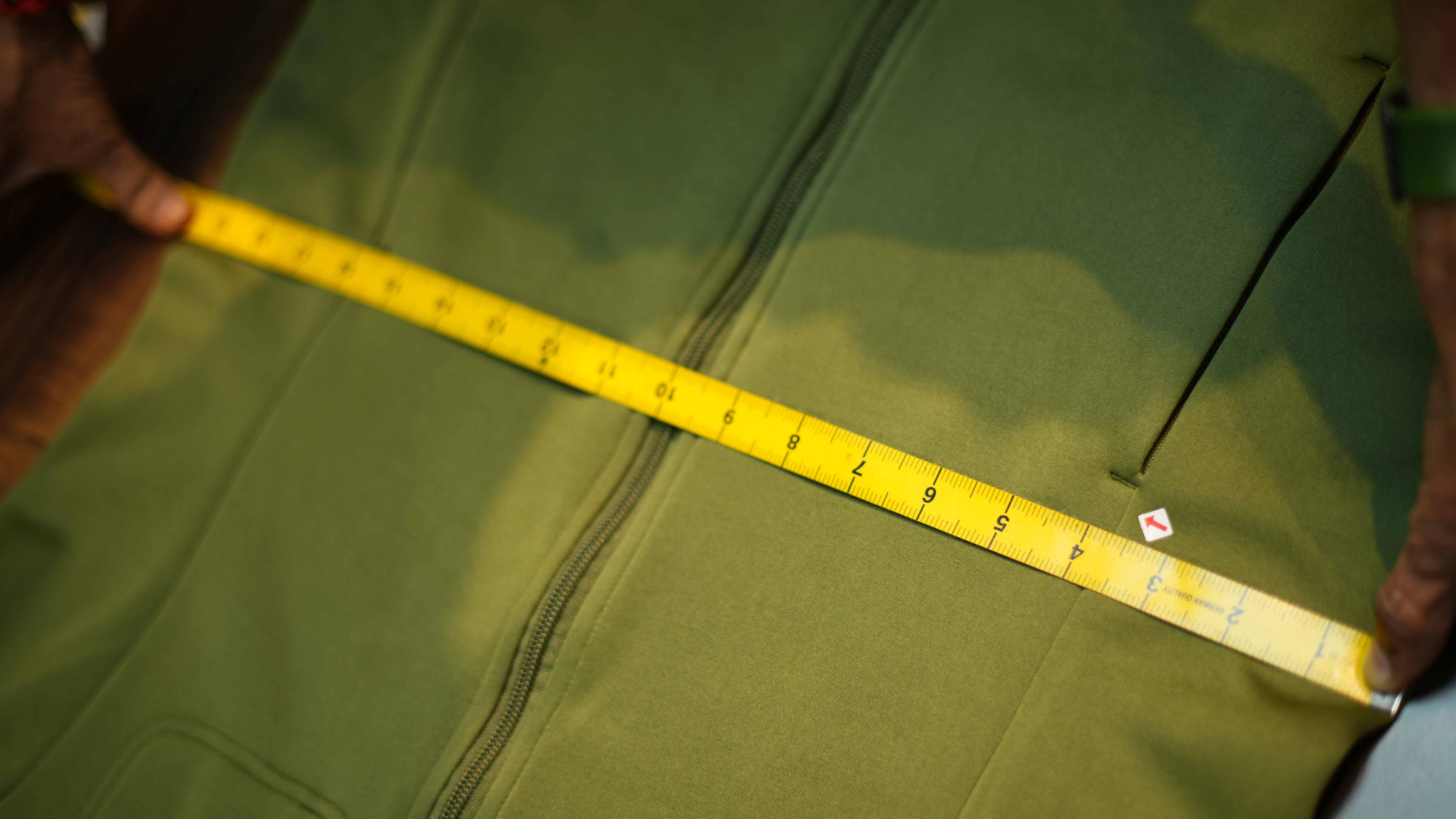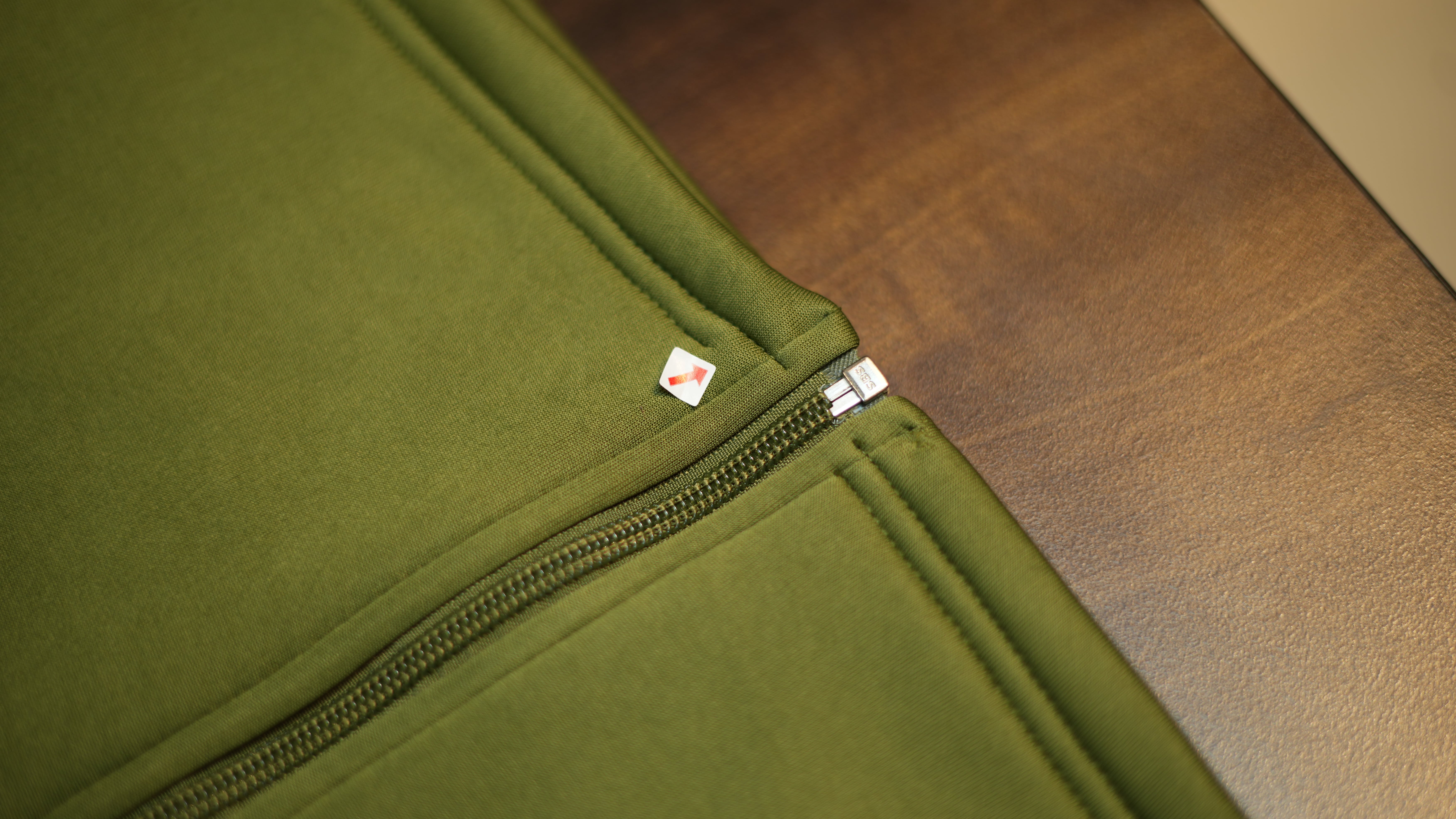Garment Quality Control | Protecting Brand Reputation in Apparel Production

Defective apparel costs the global garment industry billions of dollars annually. Even small flaws like loose threads, faulty zippers, or poor fabric quality can erode brand reputation and customer trust. This is why garment quality control has become a cornerstone of sourcing and supply chain management.
At its core, quality control is about ensuring consistency, durability, and customer satisfaction at every stage of garment manufacturing. From fabric inspection to the final product, robust quality checks protect margins and reinforce the value of high-quality garments in competitive markets.
What is Garment Quality Control?
Garment quality control is the structured process of monitoring, inspecting, and testing garments at various stages of production to ensure they meet required standards. Garment QC focuses on inspection and correction, while QA emphasizes process prevention.
In practice, this means:
- Evaluating fabric quality for defects, shading, and consistency.
- Verifying trims and zippers for durability and functionality.
- Checking tolerances for shrinkage and measurements.
- Conducting a visual inspection of finished garments.
Watch: What Are Factory Inspections | Live Product Quality Control with Silq
The Importance of Quality Control in Garment Manufacturing
In apparel manufacturing, poor QC shows up quickly, whether in rejected shipments, product returns, or negative reviews.
For premium brands, the risks are magnified:
- Rework delays disrupt the production line and supply chain.
- Defects compromise durability and long-term wear.
- Missed quality standards invite compliance penalties.
- Every subpar t-shirt or dress weakens consumer confidence.
The importance of quality control lies not just in catching mistakes but in building high-quality garments that reinforce a brand’s promise of excellence.
Common Quality Issues in Garment Production
Despite clear quality standards, sourcing teams frequently encounter:
- Fabric defects: holes, misweaves, or poor colorfastness after dyeing
- Shrinkage beyond acceptable tolerances
- Loose threads and seam irregularities affecting durability
- Non-functional trims and zippers
- Size deviations from the pack
- Incorrect labeling or packaging
A reliable QC partner like Silq can help you identify these early in the manufacturing process, preventing costly rework.

The Stages of Garment Quality Control
1. Pre-Production Inspections
- Fabric inspection to detect fabric defects before cutting.
- Verifying trims and raw materials against specifications.
- Cross-checking tech pack details with suppliers.
2. Inline Inspections (During Production)
- Quality checks at various stages of the production process.
- Detects issues like loose threads or fit deviations before they spread across batches.
- Reduces rejections and streamlines production.
3. Pre-Shipment Inspection (PSI)
- Batch-level product inspection before goods leave the factory.
- Visual inspection, measurement validation, and functionality testing for zippers and trims.
- Typically uses AQL (Acceptable Quality Limit) sampling to classify defects.
Read More: Pre-Shipment Inspection Guide [Free Checklist Inside]
4. Final Inspection & Random Sampling
- Confirms the finished garments align with quality standards.
- Ensures the final product meets customer expectations for good quality and durability.
Quality Standards and Methods in Garment QC
1. AQL (Acceptable Quality Limit): Defines how many defects are permissible in a sample size.
2. ISO quality standards: Frameworks like ISO 9001 guide quality management systems.
3. Apparel-specific tests:
- Colorfastness to washing, rubbing, and perspiration.
- Shrinkage controls during laundering.
- Seam strength and functionality of fastenings.

Embedding these standards into contracts ensures suppliers align with the required standards throughout the inspection process.
Choosing the Right Quality Control Partner
Selecting the right partner for apparel quality control is essential for brands sourcing from multiple markets. Look for:
- Expertise in garment manufacturing hubs like China, Bangladesh, and Vietnam.
- Proven inspection process experience across stages of production.
- Capability to test fabric quality, trims, and finished garments.
- Familiarity with ISO standards and AQL-based inspections.
A reliable partner like Silq can become an extension of your sourcing and quality management teams, ensuring only good quality goods leave the factory.
Read More: How to Choose a Third Party Inspection Service
Best Practices to Strengthen Garment QC
- Integrate quality checks into the production line rather than relying on the final inspection alone.
- Audit suppliers regularly to assess quality management systems.
- Train factories to detect quality issues early and reduce dependence on end-stage inspections.
- Foster long-term supplier relationships to build consistency in apparel production.
Even measures as simple as routine fabric inspection or more rigorous pre-production testing for shrinkage can prevent downstream problems, reducing rework and safeguarding delivery schedules across the supply chain. These steps make the difference between average output and consistently high-quality garments.
Quality Control as a Brand Safeguard
In garment manufacturing, every stitch matters. Strong quality control processes protect against defects, reduce waste, and uphold the reputation of high-end labels. For sourcing managers and supply chain professionals, structured inspection processes across all stages of production are the foundation of consistent, high-quality garments that build customer loyalty.
That’s where Silq steps in. With over 360 accredited inspectors operating across 24+ locations, Silq delivers real-time visibility into inspection workflows; from pre-production checks to inline inspections and final inspections helping you catch quality issues early and cut down on rework keeping your supply chain lean and your brand promise intact.
AQL (Acceptable Quality Limit) defines the maximum allowed defects in a production batch.
It protects brand reputation, reduces rework, and ensures customer satisfaction.
By embedding quality checks into the production process and working with skilled QC partners.
Pre-production, inline inspection, pre-shipment inspection, and final inspection.
It’s the process of inspecting garments across the manufacturing process to ensure the finished product meets design and durability standards.
Ready for Supply Chain Predictability?
Importers using Silq ship smarter, safer, and with total control.







